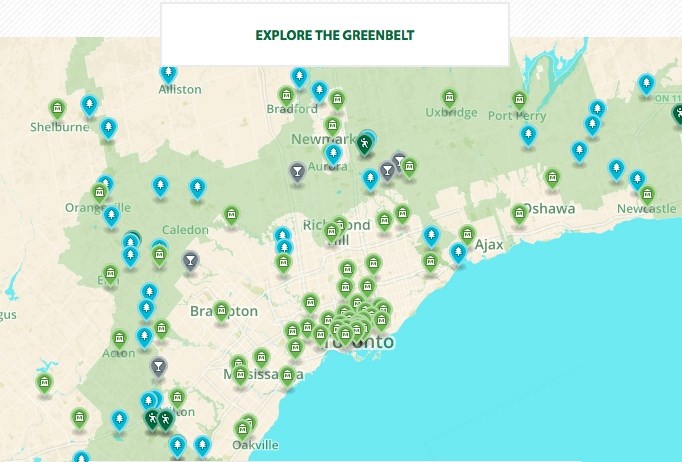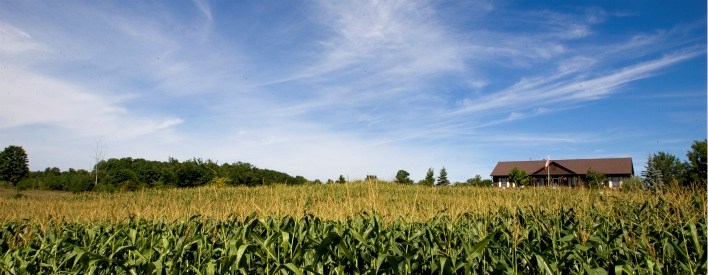More than half the planet’s people now live in urban areas. The need to supply food, shelter, fresh water and energy to billions of urban residents is resulting in loss of farmland, forests, wetlands and other ecosystems, as well as the critical ecological services they support, like providing food, clean air and drinking water.
Almost half of Canada’s urban base is on land that only a few generations ago was being farmed. According to Statistics Canada, nearly four million hectares of farmland — an area larger than Vancouver Island — were lost from 1971 to 2011, mostly due to urbanization.
A growing number of jurisdictions have responded by enacting strong land-use policies to protect farmland and green space through sound urban planning. In the 1970s, Oregon’s government imposed strict urban-growth boundaries around a number of cities, including Portland. As a result, growth in the city was confined to existing built-up areas, thereby preventing development from spilling out to farmers’ fields. Many developers and businesspeople fought the plan, arguing it would hurt the economy, but Portland is now recognized as one of the most livable cities on the continent. It has facilitated densification, improved walkability and decreased the cost of energy and transportation for homes and businesses.

In Canada, Ontario has enacted the Growth Plan for the Greater Golden Horseshoe to encourage towns and cities to grow upwards through densification rather than outwards through car-dependent urban sprawl. Ontario has also established a two-million-acre greenbelt of protected farmland and green space, which wraps around the Greater Golden Horseshoe’s major towns and cities, including Toronto, Hamilton, Markham and Burlington.
Ontario’s government is reviewing the Growth Plan and the Greenbelt Plan, along with two other adjoining land-use plans, which work together to manage growth, protect the natural environment and support economic development. This coordinated review process offers an opportunity to examine modern land-use planning and assess whether Ontario’s approach to managing growth should be applied to other towns and cities facing similar urban pressures.
A major outcome of the plans has been their success in protecting farmland from development and revitalizing Southern Ontario’s agricultural industry. The greenbelt alone, comprising just over 20 per cent of the region, generates more than $9 billion in annual revenue to local economies, producing a bounty of fruits and vegetables, beef, pork, dairy, honey and award-winning wines.
David Suzuki Foundation research shows the greenbelt’s farmland and green spaces also provide an estimated $2.6 billion annually in non-market benefits, such as water filtration by watersheds. This saves local municipalities hundreds of millions of dollars they would otherwise have to spend on water infrastructure and treatment facilities.
The Growth Plan and greenbelt also encourage smarter urban growth in the region through more efficient use of available land — which in turn reduces the amount and cost of infrastructure and supports public transit. A recent report by urban planning group the Neptis Foundation found urban expansion has slowed since plans were implemented. From 1991 to 2001, the footprint of Toronto and surrounding suburbs grew by 26 per cent to accommodate about 1.1 million new residents. Between 2001 and 2011 it expanded by just 10 per cent to accommodate roughly the same number of newcomers.
Although the Greenbelt Plan is curbing sprawl and protecting farmland and green space, it’s far from secure — and the remaining 80 per cent of the region’s farmland and natural systems remain unprotected. Proposed highways, pipelines, hydro corridors and sprawling, car-dependent subdivisions could fragment natural and agricultural systems and enable leapfrog development outside the greenbelt’s borders — with extensive land speculation in expectation of the type of sprawl these plans were intended to prevent. Environmentalists have joined farmers and local food advocates to urge Ontario’s government to strengthen regulatory protection for the greenbelt and to expand it.
Canada’s towns and cities are at a crossroads. One path leads to continued low-density, sprawling urban expansion, with endless pavement, long commutes and traffic jams, and the high social and ecological costs of wasteful forms of urban design. The other path ends sprawl by creating compact, higher-density communities with mid-rise housing and access to public transit, bike paths and walking trails, surrounded by precious farmland and green spaces like Ontario’s renowned greenbelt. What kind of cities do you want?
To support the Ontario Greenbelt, go to http://action2.davidsuzuki.org/greenbelt.
Written with contributions from David Suzuki Foundation Ontario and Northern Canada Director Faisal Moola. Learn more at DavidSuzuki.org.



